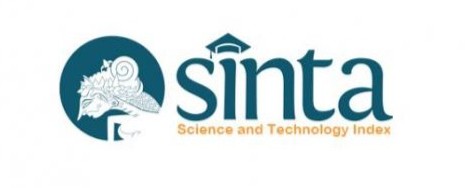Dark Fantasy in Neil Gaiman's Coraline
An Analysis of Formulaic Structure
Downloads
In the early 21st century, technology paranoia, a negative aspect of technological growth, was prevalent, particularly in the United Kingdom. This social problem coincided with an increase in popular culture toward the consumption of fantasy fiction, with the dark fantasy subgenre being revived by Neil Gaiman's Coraline. This study explores Coraline through the lens of John G. Cawelti’s formula theory to reveal the strategies resulting in its significant societal appeal. This study analyzes the novella's intrinsic elements—plot, characters and characterizations, setting, and illustrations—to identify Coraline as a dark fantasy that effectively combines horror and fantasy formulas. The use of dark fantasy aligns with Cawelti's four hypotheses, functioning as a cultural reflection, cultural solution, cultural boundaries, and cultural innovation that addresses technology paranoia.
Abraham, A., & Von Cramon, D. Y. (2009). Reality = Relevance? Insights from spontaneous modulations of the brain’s default network when telling apart reality from fiction. PLoS ONE, 4(3), e4741. https://doi.org/10.1371/journal.pone.0004741
Abrams, M. H., & Harpham, G. G. (2011). A glossary of literary terms (10th ed.). Boston: Wadsworth, Cengage Learning.
Billone, A. (2016). The future of the nineteenth-century dream-child. Routledge. https://doi.org/10.4324/9781315675350
Cawelti, J. G. (1976). Adventure, mystery and romance: Formula stories as art and popular culture. Chicago: University of Chicago Press.
Denscombe, M. (2007). The good research guide: For small-scale social research projects (6th ed.). Maidenhead: Open University Press.
Foundation, J. R. (2009). Contemporary social evils. Bristol: Policy Press.
Freeman, D., & Freeman, J. (2008). Paranoia: The 21st-century fear. Oxford: Oxford University Press.
Freytag, G. (1900). Freytag’s technique of the drama: An exposition of dramatic composition and art (E. J. MacEwan, Trans.). Scott, Foresman. http://archive.org/details/freytagstechniqu00freyuoft
Friedman, T. (2011). The politics of magic: Fantasy media, technology, and nature in the 21st century. Scope, 14.
Hand, R. J. (2021). Reflected anxieties and projected dystopias: Black Mirror, domestic media and dark fantasy. Cham: Springer International Publishing. https://doi.org/10.1007/978-3-030-47495-9_2
Harris-Fain, D. (2015). Putting the graphic in graphic novel: P. Craig Russell’s adaptation of Neil Gaiman’s Coraline. Studies in the Novel, 47(3), 335–345. https://doi.org/10.1353/sdn.2015.0042
Killmeier, M. A. (2013). More than Monsters: Dark Fantasy, the Mystery-Thriller and Horror’s Heterogeneous History. Journal of Radio & Audio Media, 20(1), 165–180. https://doi.org/10.1080/19376529.2013.777345
The Guardian. (2019, September 21). The 100 best books of the 21st century. The Guardian. https://www.theguardian.com/books/2019/sep/21/best-books-of-the-21st-century
World Science Fiction Society. (2007, July 26). 2003 Hugo Awards. The Hugo Awards. https://www.thehugoawards.org/hugo-history/2003-hugo-awards/

LAKON by Unair is licensed under a Creative Commons Attribution-NonCommercial-ShareAlike 4.0 International License.
1. The journal allows the author to hold the copyright of the article without restrictions.
2. The journal allows the author(s) to retain publishing rights without restrictions
3. The legal formal aspect of journal publication accessibility refers to Creative Commons Attribution-NonCommercial-ShareAlike (CC BY-NC-SA).


.png)













